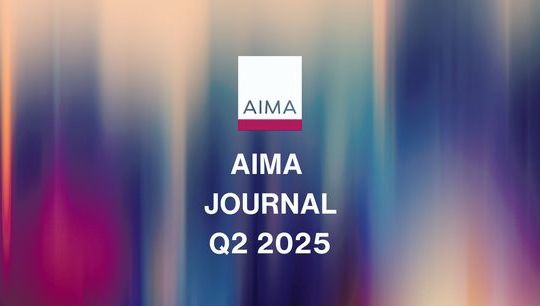A year into the liquid alternative fund market in Canada
By Belle Kaura, Third Eye Capital
Published: 31 January 2020
Liquid Alternative Regime
The game changing liquid alternative regime came into force January 3, 2019. Retail investors, for the first time in Canada, gained access to alternatives. Liquid alts can employ leverage through cash borrowing, short selling and specified derivatives. The democratization of alternatives gives retail investors access to strategies institutional investors long had at their disposal. Liquid alts are filling a gap between long-only strategies and private be-spoke investments. The new rules levelled the playing field with the US and UK.
Market
A year into the launch of liquid alts in Canada the market is already at ~7 billion. There are a flood of products and a burgeoning market with a growing suite of funds and strategies to choose from. Early entrants, through exemptive relief, launched before January 2019. There are now ~100 funds, including ETFs, launched by over 30 managers.[1] Market entry is dominated by bank-owned and large fund companies, accounting for over two-thirds of AUM. Boutique managers are bringing in the rear. The vast majority are internally managed with only a small proportion sub-advised by hedge fund managers. Entry into the Canadian marketplace by foreign managers is anticipated.
Product Strategies
Most of the products are equity focused with alpha generating objectives to produce risk-adjusted returns that outperform benchmarks, followed by multi-strategy funds with absolute return objectives. Fewer credit-focused strategies were introduced, making it a potential growth area in a low-rate environment. The greater number of alpha strategies, compared to market neutral strategies, is likely due to restrictions on maximum shorting (50% NAV).[2] Liquid alts are in essence “hedge-lite”- the short selling limit doesn’t allow pure market neutral strategies, a total leverage limit of 300% restricts some managed futures, and a 10% liquidity restriction precludes offering private debt funds. Investors would benefit from lifting of these restrictions and broadening types of strategies available.
Fees and Features of Products
Liquidity, hold periods, minimums and management fees are in line with mutual funds. Low minimums make products broadly accessible. Management fees are around 1%, performance fees are between 15%-20%. [3]In contrast to mutual funds, liquid alts can charge incentive fees based on performance, consistent with typical hedge fund compensation structures. Fee models range from standard perpetual high-water mark, to fixed hurdle rates, and relative benchmarks. Education about the role of performance fees in alignment of interests would give advisors comfort.
Challenges for Hedge Fund Managers
We will see evolution with growth and diversification in types of strategies, which will bring new challenges of distribution and market saturation that may lead to erosion of hedge fund sales. 81%[4] of advisers prefer liquid alts[5], advisers may opt for enhanced liquidity, transparency of reporting and ease of entry of these structures. Hedge funds able to adapt strategies to fit the new rules expanded offerings to the retail world. To be successful, managers used to operating in the private space, need to adhere to more frequent reporting and overcome operational/distribution challenges. Accessing distribution channels continues to be a challenge with promotion of internal funds and a declining number of products approved for distribution on large dealer and bank-owned shelves. If boutique managers cannot scale operations, a greater level of convergence and consolidation between hedge fund managers and conventional mutual fund manufacturers can be expected.
Risk Ratings
It is imperative, especially late in the economic cycle, that investors are not denied access to benefits of alternatives by simplistic rating of alternatives as high-risk. Widespread adoption hinges on fair and accurate ratings. While ratings continue to a be a barrier to broad distribution, we are seeing positive traction with increasing adoption of AIMA/CAIA Risk Ratings.[6] Distribution channels will expand as dealers implement fair ratings and funds build a multi-year performance history. The notion that all alternatives are high-risk must be dispelled with information about how alternatives can reduce risk. Dealers can then allocate to alternatives outside of the typical 10% high-risk bucket.
Proficiency Requirements
Another barrier to distribution is MFDA dealers’ inability to sell liquid alts due to proficiency requirements under the framework. Until suitable proficiency standards are adopted, many Canadians will continue to not have access to these products. AIMA is working with regulators to solve this issue.
Market Environment
In this late-cycle, as we head into a more challenging market environment, with global quantitative tightening, trade wars and escalating macro-economic concerns, investors need to prepare for volatility of equity markets and declining fixed income returns by turning to investments that are uncorrelated to traditional markets. Investors can no longer rely on the traditional 60/40 model. Negative equity market returns will bring into sharper focus alternatives as both defensive and offensive solutions. History has proven that unlike public markets, alternatives deliver returns in positive and negative economic conditions. With the advent of liquid alts, investors are now better able to achieve financial goals by building a balanced portfolio that preserves capital and protects against downside risk to deliver risk-adjusted returns.
Strategies for Late-Cycle Investing
The landmark change came at a time when investors are looking for uncorrelated returns, interest will heighten as market conditions worsen. Alternatives act as a diversifying tool to reduce volatility by generating attractive returns with low correlation to markets. Products that preserve capital and enhance yield will be favoured as we head into a downturn, particularly with an aging demographic. Products offering diversification from interest rate sensitivities will multiply. Volatility will create opportunities for tactical strategies exploiting market inefficiencies (short-term statistical arbitrage, factoring). Relative value strategies are designed to perform in uncertain market conditions. Managers with experience navigating through cycles will have an advantage.
Directional and Non-Directional Strategies
Strategies can be directional or non-directional to broad market movements. Directional strategies seek outperformance by amplifying returns through timing or shorting. Even strategies with underlying exposure to equities deliver returns independent of market movements. Performance of absolute return funds at 6-8%, with bond-like volatility and low correlation, demonstrate funds are functioning as designed. [7] Returns of equity and income alpha funds with low correlation to long-only indexes will not be as strong as long-only funds in bull markets, but investors gain hedging protection. Non-directional strategies unlock value in pricing/idiosyncratic assets. Investors who want no underlying exposure to equities can opt for these alternative beta products.[8]
Portfolio Allocation and Right Mix of Alternatives
As we near the end of a decade-long bull market, a pivot to the right mix of alternatives in a diversified portfolio can provide resilience and returns. Greater diversification across alternative asset classes is a foreseeable trend. Strategic and disciplined allocation serves to reduce risk, manage liquidity and target desired returns – which is fundamental to alternatives achieving their desired objective. There is a broad universe of strategies across a spectrum of risk/return profiles with unique characteristics and exposure to different assets. A real understanding of strategies and trade-offs is needed to tailor allocation to investment objectives. Alternatives can enhance return, diversify risk, hedge inflation, match long-term liabilities or generate cashflow. Risk tolerance, liquidity constraints and time horizon will dictate how much of a portfolio is allocated to alternatives. A global survey[9] found 35% of advisors invest in liquid alts and another 16% plan to. Canadian advisers predict 10% of their book will be allocated to liquid alts. A new model for portfolio construction will emerge with alternatives making up 5-10% of portfolios.
Future of Liquid Alternatives in Canada
We are still in early stages of the liquid alts story in Canada – the space has a lot of runway to grow. This is an unprecedented time of innovation and opportunity for Canada’s investment industry. Fuelled by a need to shelter capital and demand for yield, the global alternative market is expected to hit $14 trillion by 2023[10]. The liquid alt market is forecasted to be $100 billion by 2025[11] – a meaningful share of the $1.5 trillion mutual fund market in Canada.
The fund-of-funds market is ~$550 billion.[12] Greater take-up by fund-of-funds, which can invest 10% in liquid alts, has the potential to significantly accelerate market growth. More ETF launches are anticipated, which will make alternatives more accessible and spur growth of the sector.
Alternatives are increasingly becoming an integral part of institutional portfolios with allocations making up 30%[13] to 50%[14], and rising across a broader investor base. Alternatives continue to gain momentum with more than half of institutional investors planning to increase allocations over the next year.[15] We can expect to see this trend carry into the retail space. Products will become more mainstream and cater to a wider demographic as distribution channels widen with changes to ratings and opening of MFDA sales channel of ~80,000 advisors.
Popularity will gain traction as familiarity with complexities of alternatives and how to assess products grows. Sales are expected to ramp up once there are proven track records and dealers become more attune to the compelling investment case and how to best allocate alternatives as part of a balanced portfolio.
Regulatory sentiment supports growth with short sale collateral limit and other relief granted and collaboration with AIMA to address proficiency requirements. AIMA will continue to advocate for a flexible framework promoting innovation to provide Canadians a suite of products to help them realize their investment goals. The Canadian alternative market is poised for greater expansion with world-class talent and new channels for growth in retail markets.
[1] Industry Data (Fund Data and other sources)
[2] CIBC – Alternative Mutual Funds Growth Potential Looks Solid Coming Out of The Gate (July, September 2019)
[3] Ibid.
[4] AIMA Canada & Scotiabank Alternative Mutual Fund Market Impact Report (2019)
[5] Ibid.
[6] Risk Rating Guidelines for Alternative Investments in Canada (January 2019)
[7] CIBC – Alternative Mutual Funds Growth Potential Looks Solid Coming Out of the Gate (July, September 2019)
[8] Alternative beta products - credit arbitrage, relative value, commodities, currencies, private credit, real estate, infrastructure, idiosyncratic strategies.
[9] Alternatives in 2019, Preqin
[10] Preqin Data (2018)
[11] Scotiabank and CIBC
[12] CIBC – Alternative Mutual Funds Growth Potential Looks Solid Coming Out of the Gate (July, September 2019)
[13] https://www.piacweb.org/publications/asset-mix-report.htmltheyear-2006
[14] CPPIB Annual Report 2018 (and other industry data)
[15] CIBC Mellon “The Race for Assets Canada vs. the World”







